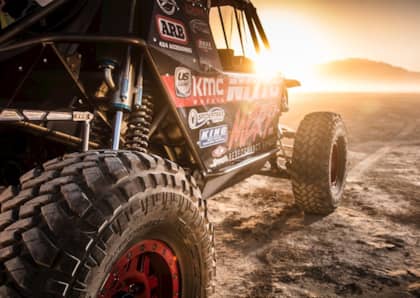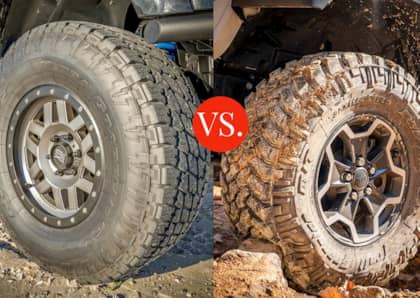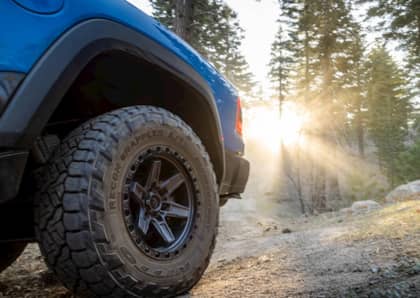Is Your Truck or SUV Ready for LT Tires? What to Know Before You Buy LT Tires
When it comes to getting a new set of rubber for your truck or SUV, there’s no shortage of options. While price, performance, and life expectancy are major deciding factors, we think there is one more critical thing to consider before purchasing a new set of treads—Hard Metric or LT (Light Truck). Most modern trucks and SUVs come with Hard Metric tires from the factory. This is primarily due to the fact that Hard Metric tires are lighter.
A lighter tire equates to better fuel economy, increased vehicle performance, and a smoother ride. So, if your vehicle came with a Hard Metric, it likely makes sense to go back with one as well? Not necessarily. In this article, we’ll break down when and why it makes sense to make the switch to the stronger LT series tire and when sticking with a Hard Metric is the right call.

What’s The Difference?
The most important distinguishing factor between the stock Hard Metric tire that came on your vehicle and an LT tire in the same size is the load index. LT tires are designed to carry more weight. In order to accomplish these higher load ratings, the tires are built with stronger (and heavier) sidewalls. This is why the same size tire in an LT will weigh more than a Hard Metric equivalent.

Off-Road
For off-road enthusiasts, moving to a LT is the right choice. While the LT may be a touch heavier, the benefits of the stronger sidewall alone make the switch well worth it. No mater if you are cruising gravel roads or extreme rock crawling, an LT is better suited to handle harsh terrain.

Load Range
It’s not uncommon to add hundreds of pounds of extra weight to your 4x4 with aftermarket parts. This can put you at, if not past, the limit of what your original tires were intended for. If you find yourself adding on serious weight with aftermarket goods, it’s wise to make the shift from a Hard Metric to a LT tire with a higher load rating.

Tread Depth
Something that is often hard to catch at first glance is the difference in tread depth between the Hard Metric and LT. In the same size, the LT version will tend to have a deeper tread depth over the Hard Metric. This can make a noticeable difference on the trail.

Tread Wear Warranty
Depending on the tire, you can find high-mileage tire tread warranties in both Hard Metric and LT tires. Companies such as Nitto Tire are known for their high-mileage warranties with even the company’s latest Recon Grappler A/T offered with a 55K tread wear warranty.

On-Road Performance
When it comes to the handling differences between a Hard Metric and LT on the road, it has to do more with sidewall than tread pattern. In the rain, snow, and dry tarmac, you’d be hard pressed to tell the difference in performance. With a higher load rating on the LT, the sidewall is going to be a bit firmer. The Hard Metric on the other hand is a little more compliant, which helps it absorb road imperfections easier. This gives the Hard Metric the edge in ride quality.

The Best Fit
The best tire is always the one that fits your needs and is properly rated for the vehicle. If your truck or SUV came with an LT from the factory, then it should be replaced with a LT. Only if your vehicle came with a Hard Metric do you have the choice to move up to the beefier LT. For most off-road enthusiasts, the move up to a LT is the right one. The sidewall strength, deeper tread, and more available sizes make the LT the leading tire type for truck and SUV owners looking to upgrade.

More From Driving Line
- Can't decided between a Mud-Terrain or an All-Terrain? Take a look at a Hybrid Tire.











